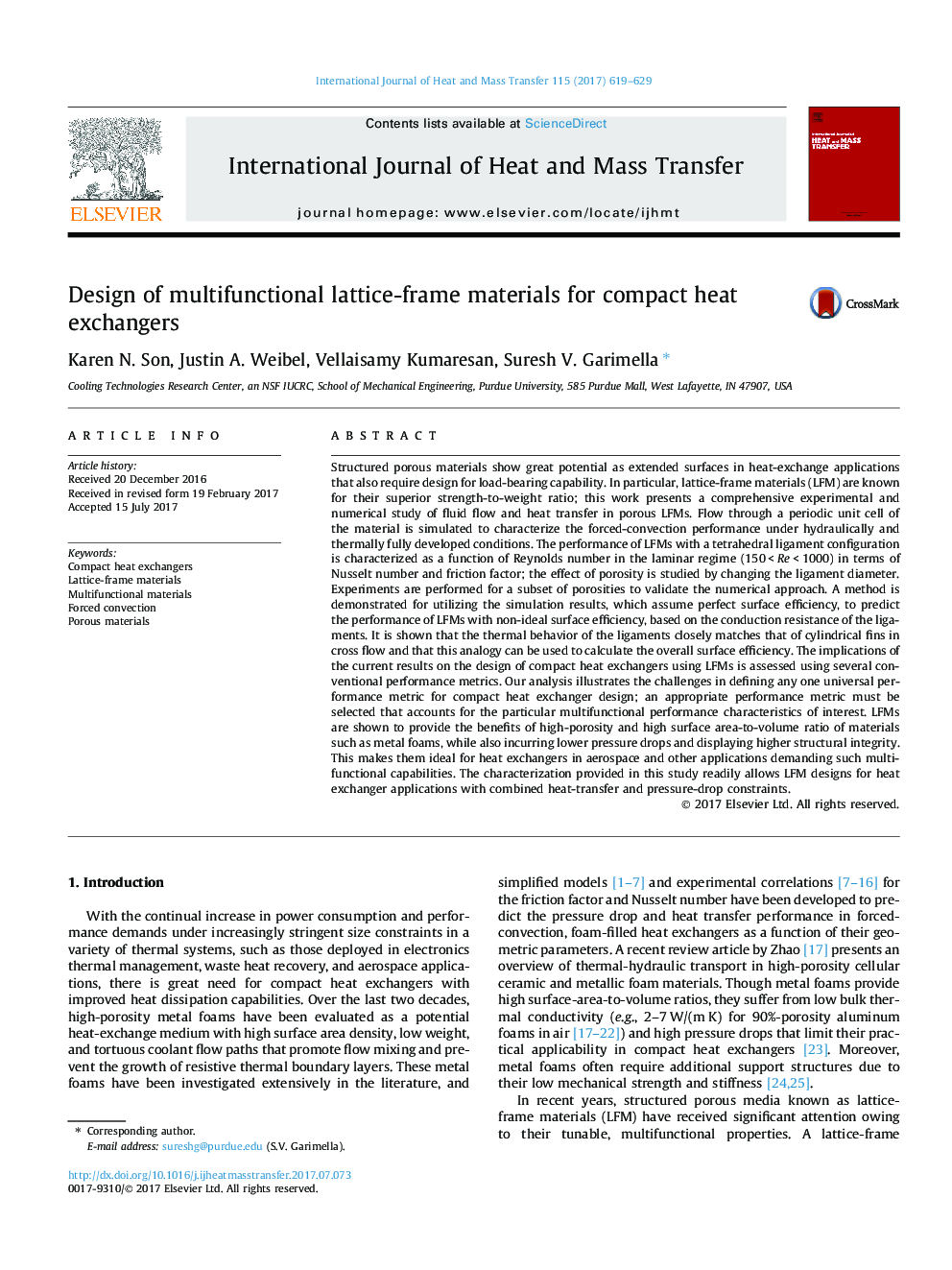| کد مقاله | کد نشریه | سال انتشار | مقاله انگلیسی | نسخه تمام متن |
|---|---|---|---|---|
| 4993497 | 1458026 | 2017 | 11 صفحه PDF | دانلود رایگان |
عنوان انگلیسی مقاله ISI
Design of multifunctional lattice-frame materials for compact heat exchangers
ترجمه فارسی عنوان
طراحی متریال های چند لایی برای قابهای مبدل حرارتی جمع و جور
دانلود مقاله + سفارش ترجمه
دانلود مقاله ISI انگلیسی
رایگان برای ایرانیان
کلمات کلیدی
مبدل های حرارتی فشرده، مواد قاب کامپوزیت مواد چند منظوره، کنسانتره اجباری، مواد متخلخل
موضوعات مرتبط
مهندسی و علوم پایه
مهندسی شیمی
جریان سیال و فرایندهای انتقال
چکیده انگلیسی
Structured porous materials show great potential as extended surfaces in heat-exchange applications that also require design for load-bearing capability. In particular, lattice-frame materials (LFM) are known for their superior strength-to-weight ratio; this work presents a comprehensive experimental and numerical study of fluid flow and heat transfer in porous LFMs. Flow through a periodic unit cell of the material is simulated to characterize the forced-convection performance under hydraulically and thermally fully developed conditions. The performance of LFMs with a tetrahedral ligament configuration is characterized as a function of Reynolds number in the laminar regime (150 < Re < 1000) in terms of Nusselt number and friction factor; the effect of porosity is studied by changing the ligament diameter. Experiments are performed for a subset of porosities to validate the numerical approach. A method is demonstrated for utilizing the simulation results, which assume perfect surface efficiency, to predict the performance of LFMs with non-ideal surface efficiency, based on the conduction resistance of the ligaments. It is shown that the thermal behavior of the ligaments closely matches that of cylindrical fins in cross flow and that this analogy can be used to calculate the overall surface efficiency. The implications of the current results on the design of compact heat exchangers using LFMs is assessed using several conventional performance metrics. Our analysis illustrates the challenges in defining any one universal performance metric for compact heat exchanger design; an appropriate performance metric must be selected that accounts for the particular multifunctional performance characteristics of interest. LFMs are shown to provide the benefits of high-porosity and high surface area-to-volume ratio of materials such as metal foams, while also incurring lower pressure drops and displaying higher structural integrity. This makes them ideal for heat exchangers in aerospace and other applications demanding such multifunctional capabilities. The characterization provided in this study readily allows LFM designs for heat exchanger applications with combined heat-transfer and pressure-drop constraints.
ناشر
Database: Elsevier - ScienceDirect (ساینس دایرکت)
Journal: International Journal of Heat and Mass Transfer - Volume 115, Part A, December 2017, Pages 619-629
Journal: International Journal of Heat and Mass Transfer - Volume 115, Part A, December 2017, Pages 619-629
نویسندگان
Karen N. Son, Justin A. Weibel, Vellaisamy Kumaresan, Suresh V. Garimella,
